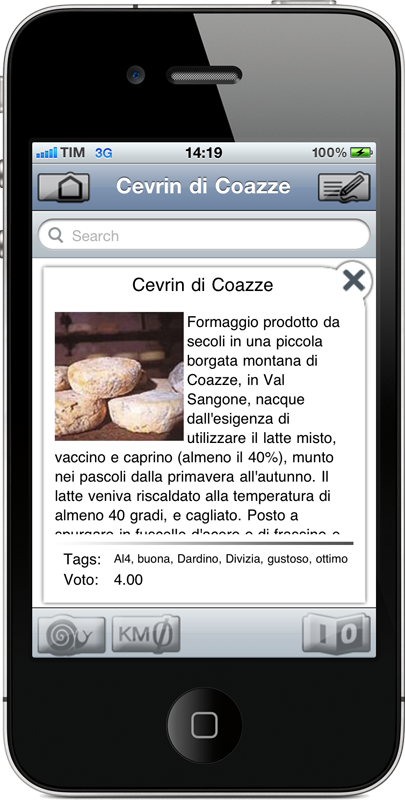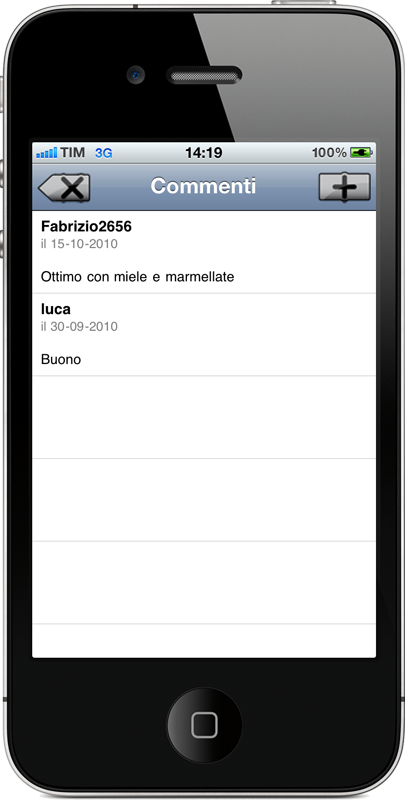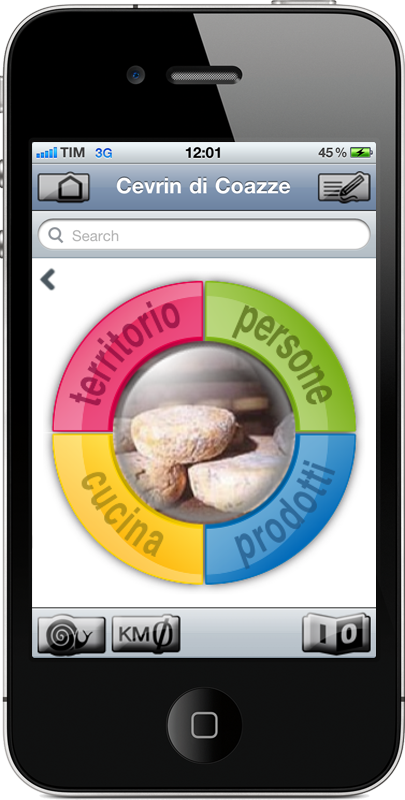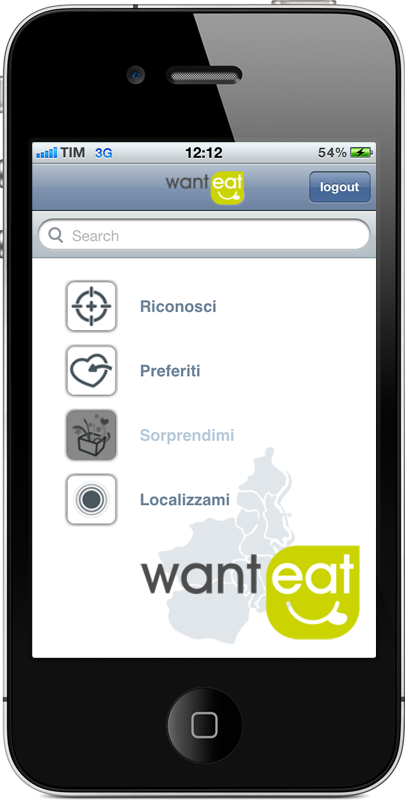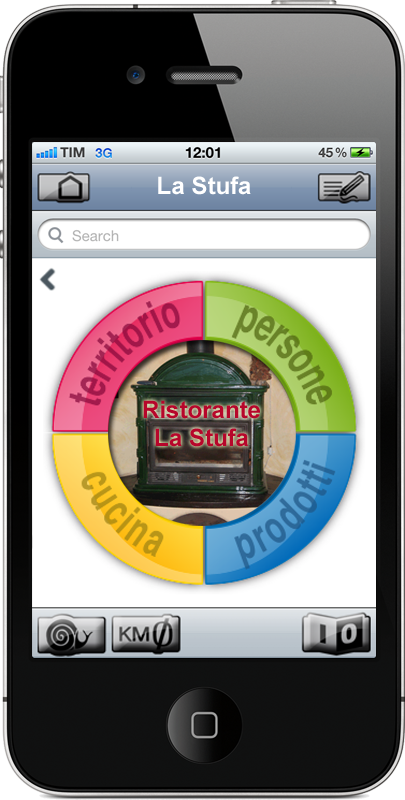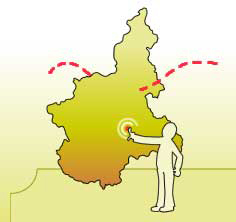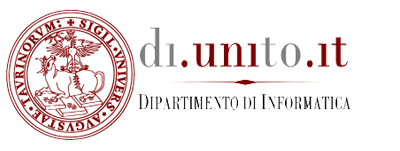Storyboard
The consequences of a hike: a scenario | Table of the key activities | Summary table
The consequences of a hike: a scenario
Early May. Antonio is on a journey through Val Sangone, a local valley close to the mountains. During a hike, he discovers a pasture land where goats graze. They belong to Claudio Lussino, a renowned producer of Cevrin di Coazze, a traditional goat cheese of that area. Antonio visits Mr. Lussino's shop, tastes the cheese, and decides to share his experience with WantEat.
He takes a picture of the cheese label with his smartphone. Lussino's cheese is recognized as a smart thing in WantEat network and Antonio is put in contact with its virtual avatar. Antonio reads further information about the cheese, about Val Sangone and its history and traditions. In particular, he discovers that there is an interesting ethnographic museum nearby where he can learn how people used to live in the mountain valley and how they traditionally produced cheese, infuses and liquors with herbs.
Before going to the museum, he bookmarks and tags the cheese, and uploads a comment in which he mentions an exceptional white wine (Erbaluce) he just drank together with it. "A perfect matching!" Antonio says.
Later in July, Lisa walks through the farmers' market of Giaveno, the main town of Val Sangone. Lisa is a tourist, and is interested in local food and wine.
Her user model in WantEat says that she loves goat cheese, and that her personal tastes are indeed similar to those of Antonio.
Although the two of them never talked to each other, their interaction with the system and the things in it suggests that they may like the same kinds of products.
On her smartphone, Lisa has the application turned on, hence as she gets close to Mr. Lussino's market stall, she gets in contact with the Cevrin cheese.
Lisa is presented with a short story of how the production of Cevrin had been slowly disappearing, before a number of producers decided to save it.
In addition, she is presented with some interesting things people did or said about the cheese, in particular the people that have a profile close to hers.
Lisa is then shown the social network of Lussino's Cevrin, including the profile of Mr. Lussino himself, Val Sangone, a restaurant called La Stufa where the cheese can be tasted together with other local products, a recipe of a salad made with the cheese, and the Erbaluce wine that Antonio and many other people found perfect to drink with it. After tasting and liking Lussino's cheese, Lisa follows the link to Erbaluce and in the network of the wine she discovers a nearby wine shop where she can buy it. Following the link from the cheese to "Val Sangone", she learns about the dialect spoken in the valley and how it derives from the fact that in the past the valley was part of different kingdoms and served as a border between them.
Lisa reads a summary of the comments of other people regarding the dialect of Val Sangone and she discovers it is actually a dialect of the Franco-Provençal language.
Moreover, Lisa is interested in the recipe of the cheese salad: she remembers her grandmother preparing it, she connects to the recipe page, and she
discovers that it is a traditional dish prepared in spring to welcome the new season. Lisa bookmarks the recipe, because she wants to find it easily once she is at home.
The same evening, when using the system again to search for a good restaurant, she discovers that the restaurant La Stufa is highlighted because it serves the salad whose recipe she bookmarked earlier, and other users have recommended the dish.
Once home, Lisa tastes the wine she bought and finds out she likes it a lot, she agrees with the comments that suggested it together with Cevrin.
She connects to our application on the Web, she finds the virtual transposition of the market stall, and adds a positive evaluation to the cheese-wine coupling.
After some days Mr. Lussino connects to WantEat Backshop on the web and reads about the comments attached to his farm and cheese. He discovers the connection with Erbaluce and also the shops and restaurant selling and serving his cheese; in this way he discovers the profile of people appreciating his cheese and can establish direct links with his customers.
Table of the key activities
| Label | Actor | Action | Object |
|---|---|---|---|
| A0 | Mr. Lussino | registers | his farm and his products |
| A1 | Antonio | takes a picture of | Lussino's Cevrin |
| A2 | WantEat | shows the social network of | Lussino's Cevrin |
| A3 | Antonio | bookmarks | Lussino's Cevrin |
| A4 | Antonio | tags | Lussino's Cevrin |
| B0 | WantEat | connects | Lisa and Lussino's Cevrin |
| B1 | WantEat | presents the story of | Lussino's Cevrin |
| B2 | WantEat | shows other people's comments on | Lussino's Cevrin |
| B3 | WantEat | shows the social network of | Lussino's Cevrin |
| B4 | Lisa | follows the link to | Erbaluce wine |
| B5 | Lisa | asks for | a restaurant recommendation |
| C1 | Mr. Lussino | gets feedback on | his farm and products |
Summary table
A0 - Mr. Lussino registers his farm and his products. |
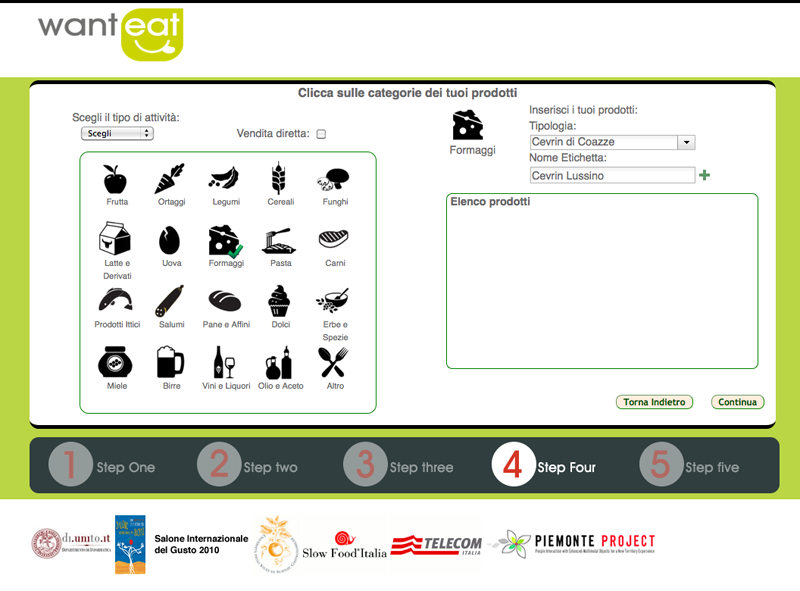 |
A1 - Antonio takes a picture of Lussino's Cevrin. |
|
A2 - WantEat Mobile shows Antonio the social network of Lussino's Cevrin. |
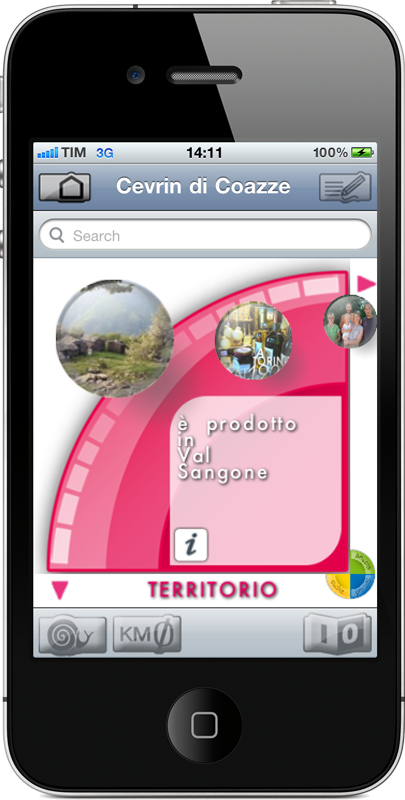 |
A3 + A4 - Antonio bookmarks and tags Lussino's Cevrin. Bookmarks are part of the user-generated content, so the UGC Manager is responsible for storing Lussino's Cevrin among Antonio's bookmarks. This action is recorded by the Logger in the Logs DB, and both the Social Network Manager and the User Model Manager will take it into account when updating the information in their care. |
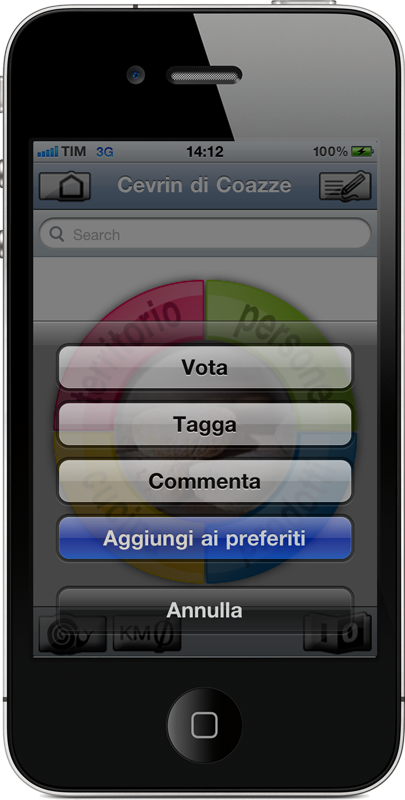 |
B0 - WantEat connects Lisa and Lussino's Cevrin. Lisa has the application turned on in push mode, so the system knows her GPS-tracked position, and determines a set of products that may be of interest to her, through the Adaptation and Recommendation Manager. The Proximity Manager recognizes a proximity between Lisa and one of these potentially interesting products, Lussino's Cevrin, and pushes the information to the Client-Side Logic. |
|
B1 + B2 + B3 - WantEat presents Lisa various information on Lussino's Cevrin. |
|
B4 - Lisa follows the link to Erbaluce. Lisa “follows the link” by bringing a new element in the center of the Wheel. The request sent to the Coordination Manager is then the same as in activity A2; only the name of the product is determined in a different way (it is chosen by Lisa and not found by the Recognition Service). |
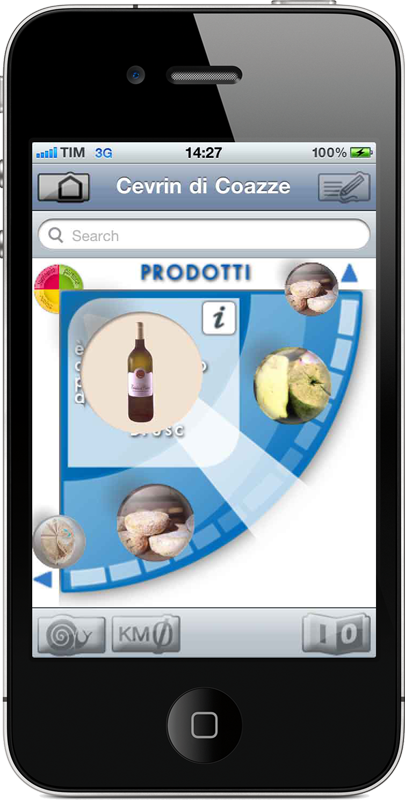 |
B5 - Lisa asks for a restaurant recommendation. Here Lisa is using the “Recommend” function on the client, with a filter that selects only restaurants. The Coordination Manager then activates the following process: the Ontology & DB Manager provides a list of restaurants that are close to Lisa (by exploiting the Proximity Manager). The UM Manager provides Lisa's user model. The Adaptation & Recommendation Manager then ranks the list according to Lisa's user model, where her recent activity shows that she had bookmarked the salad recipe and could therefore be interested in tasting it. |
|
Mr. Lussino gets feedback on his farm and products. Mr. Lussino connects to the Backshop Website, which uses functions from the Analysis services to provide statistics about his cheese and details about the people that got in touch with it and the shops and restaurant selling or serving it. |
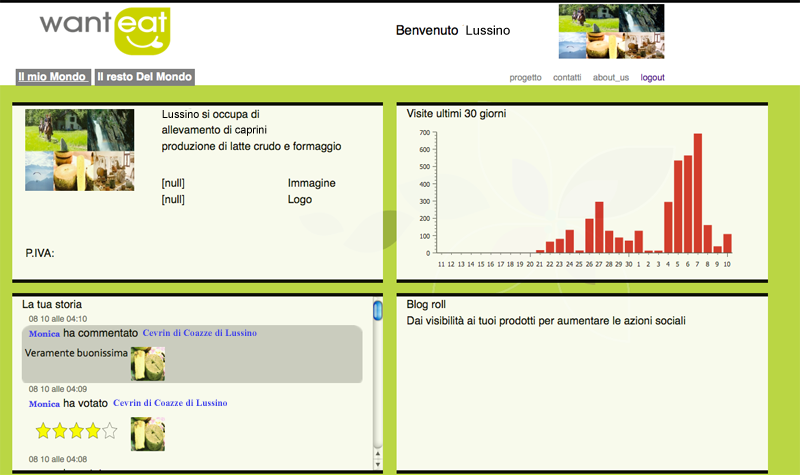 |


